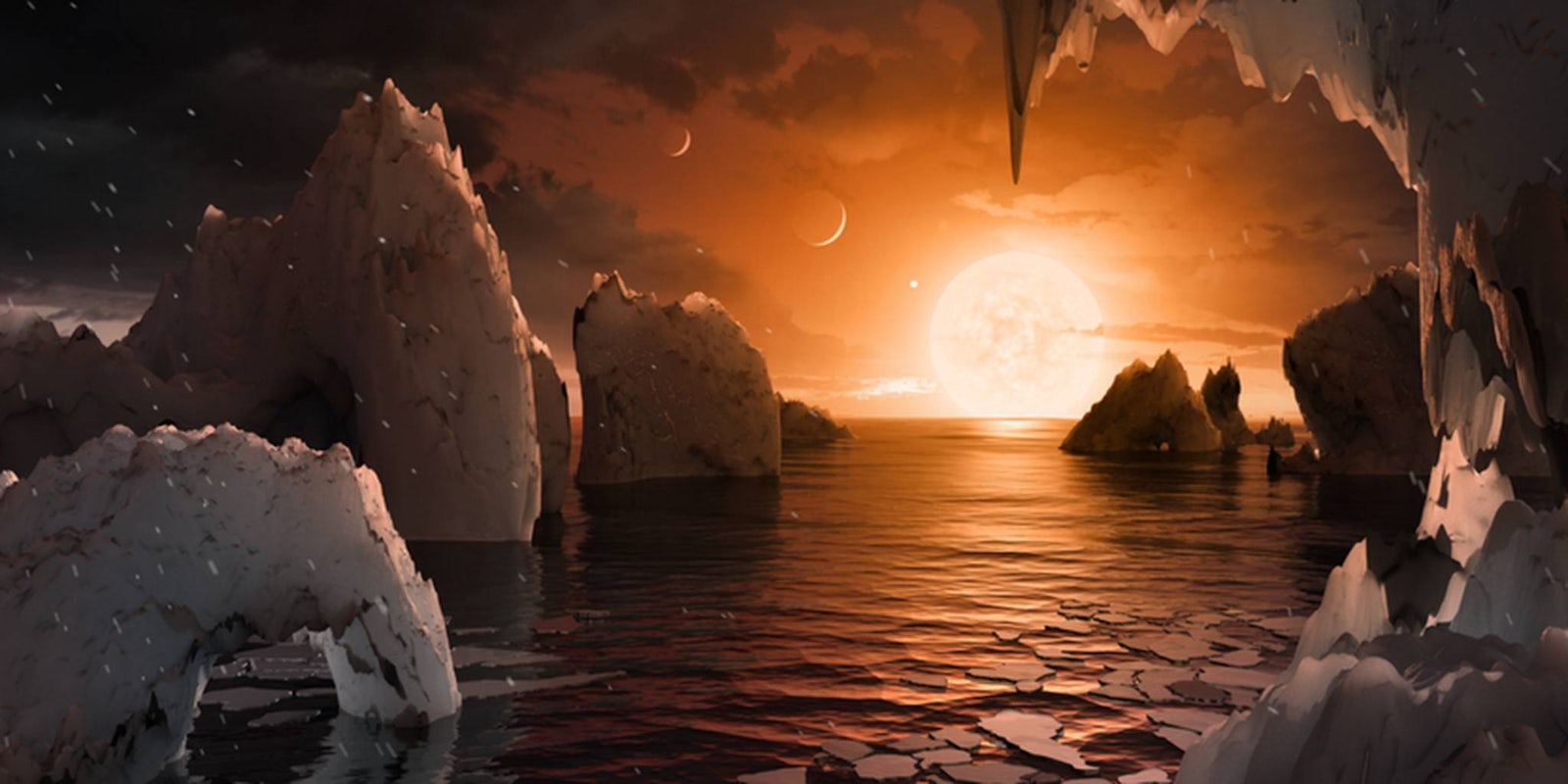Scientists may have come just one step closer to discovering another life-supporting planet in our universe.
NASA announced at a press conference Wednesday afternoon that the Spitzer Space Telescope has spotted the “first known system of seven Earth-sized planets around a single star. Three of these planets are firmly located in the habitable zone, the area around the parent star where a rocky planet is most likely to have liquid water.”
The discovery is exciting for researchers, who published a paper on the discovery today in the journal Nature, because Earth-like planets haven’t been found in great abundance. This grouping of planets around an ultra-cool, Jupiter-sized red dwarf sun called TRAPPIST-1 has three planets the could be habitable, raising the chances that one could have the right conditions for life.
Water has not yet been discovered on the planets, which are some 40 light years away, but researchers are zeroing in on the celestial bodies to find out more about them. That includes studying the atmospheres around the planets to look for elements associated with life.
“This discovery could be a significant piece in the puzzle of finding habitable environments, places that are conducive to life,” said Thomas Zurbuchen, associate administrator of the agency’s Science Mission Directorate in Washington, in a NASA press release. “Answering the question ‘are we alone’ is a top science priority and finding so many planets like these for the first time in the habitable zone is a remarkable step forward toward that goal.”
A video below discusses some of what we know so far about the exoplanets.
The three habitable-zone planets are TRAPPIST-1e, 1f, and 1g, and scientists think the middle of them, TRAPPIST-1f, is the most likely to host life, though it’s slightly colder than Earth. The planets are much closer to their dwarf sun than planets in our solar system, but they’re still cool enough for water to exist in liquid form because TRAPPIST-1 is also much colder than our sun.
The Spitzer telescope observed TRAPPIST-1 for 500 hours in October 2016, and more study is planned.
“This is the most exciting result I have seen in the 14 years of Spitzer operations,” said Sean Carey, manager of NASA’s Spitzer Science Center at Caltech/IPAC in Pasadena, California. “Spitzer will follow up in the fall to further refine our understanding of these planets… More observations of the system are sure to reveal more secrets.”
